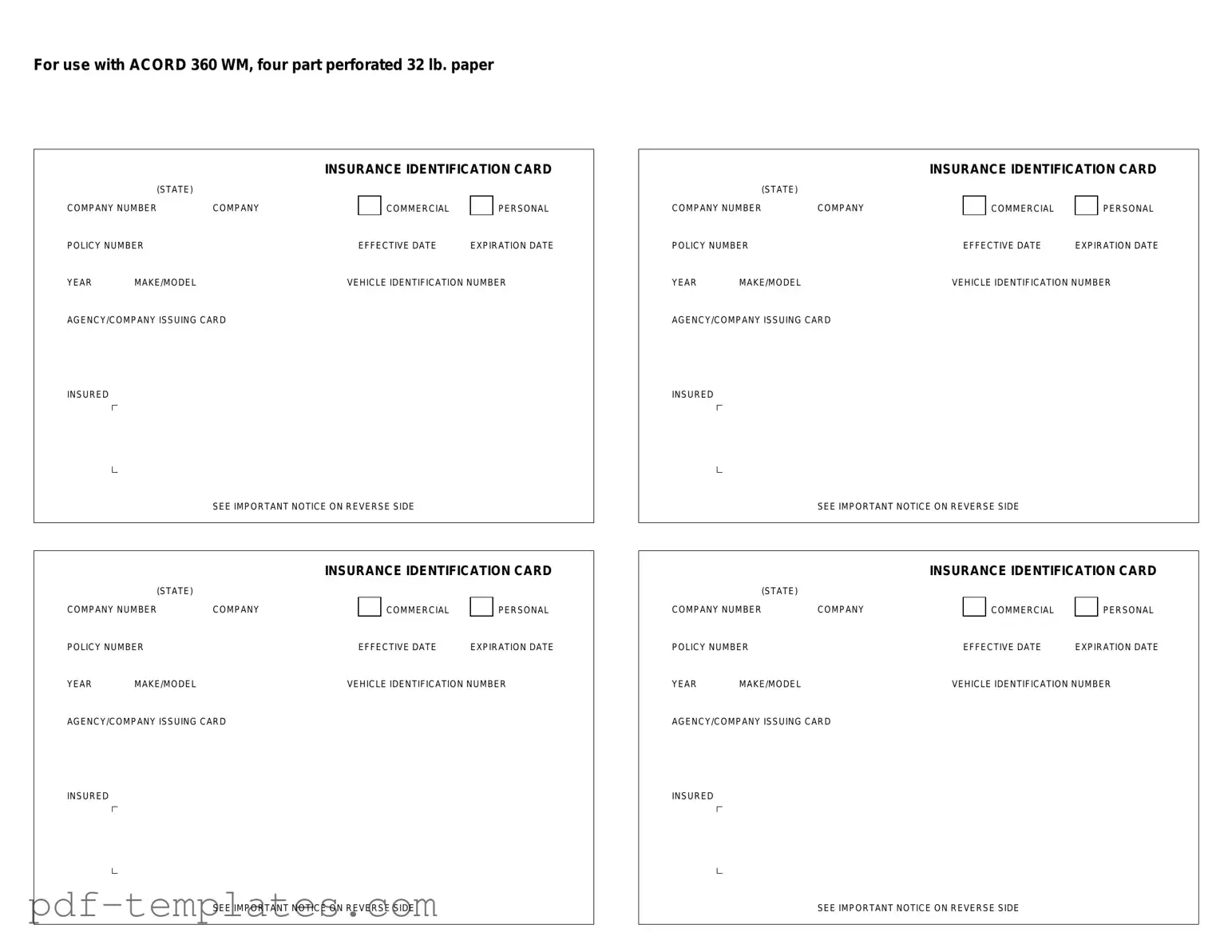The Acord 50 WM form, primarily used for workers' compensation insurance, shares similarities with the Acord 25 form. The Acord 25 is a standard certificate of insurance that provides proof of coverage for various types of insurance, including general liability and auto insurance. Both forms serve as essential documents in the insurance industry, ensuring that parties involved have the necessary proof of coverage. They facilitate communication between insurers and clients, fostering transparency and trust in the insurance process.
Another document that resembles the Acord 50 WM form is the Acord 130 form. This form is utilized for commercial property insurance and offers a comprehensive overview of the insured property. Similar to the Acord 50 WM, the Acord 130 collects vital information about the insured entity, including property details and coverage limits. Both documents aim to provide clarity and assurance to stakeholders regarding the extent of coverage and the specifics of the insured's situation.
The Acord 27 form is also comparable to the Acord 50 WM form. The Acord 27 serves as a commercial general liability application, gathering essential information to assess risk and determine coverage. Like the Acord 50 WM, it is designed to ensure that the insurance provider has a clear understanding of the applicant's needs. Both forms are integral in the underwriting process, allowing insurers to make informed decisions based on the information provided.
In addition, the Acord 45 form shares characteristics with the Acord 50 WM. The Acord 45 is used for personal lines insurance applications, including homeowners and auto insurance. Both forms collect detailed information about the insured, such as personal data and coverage requirements. They serve to streamline the application process, ensuring that insurers can accurately assess the risk and provide appropriate coverage options.
The Acord 126 form is another document that aligns closely with the Acord 50 WM form. The Acord 126 is a commercial auto application that gathers information about vehicles and drivers. Similar to the Acord 50 WM, it focuses on understanding the specific needs of the insured party to tailor coverage effectively. Both forms emphasize the importance of accurate data collection to facilitate proper risk assessment and coverage determination.
For those in California seeking to obtain or renew identification, the process is streamlined through the California Identification Card or Senior Identification Card form, known as form DL 410 ID. It's essential for applicants to understand the requirements, including the necessity for a Social Security Number and eligibility for renewal by mail. In addition, they can find information regarding organ donor status and voter registration. For further assistance and resources, you can refer to All California Forms, which provides comprehensive details and guidance for all necessary documents.
The Acord 140 form also bears resemblance to the Acord 50 WM. Used for excess and surplus lines insurance, the Acord 140 collects information about unique risks that may not be covered under standard policies. Both forms aim to provide insurers with a comprehensive view of the insured's circumstances, enabling them to offer suitable coverage options. They highlight the importance of understanding the specific needs of the insured to ensure adequate protection.
The Acord 51 form is another document that parallels the Acord 50 WM. The Acord 51 is utilized for professional liability insurance applications, focusing on risks associated with specific professions. Like the Acord 50 WM, it gathers pertinent information to help insurers evaluate the applicant's risk profile. Both forms play a crucial role in the underwriting process, ensuring that the coverage provided aligns with the unique needs of the insured.
Lastly, the Acord 60 form shares similarities with the Acord 50 WM. The Acord 60 is designed for pollution liability insurance applications, addressing the specific needs of businesses involved in activities that may pose environmental risks. Both forms collect essential data about the insured entity, allowing insurers to understand the risk factors involved. They emphasize the importance of tailored coverage to protect against unique liabilities that may arise in specific industries.
